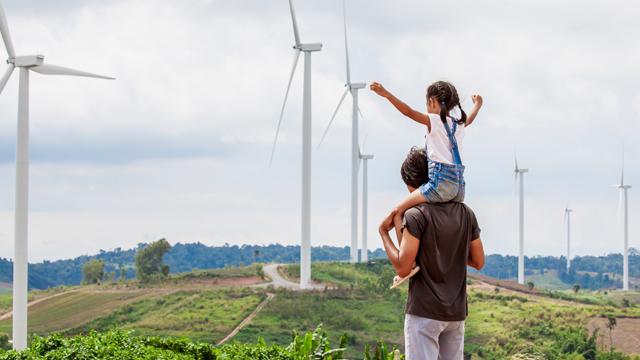
What is green energy?
And what’s the difference between green energy, renewable energy and clean energy? Often these terms are used interchangeably, but there are some differences. Here’s our simple guide.
Green energy comes from natural sources, such as the sun and wind.
What’s the difference between green energy and renewable energy?
Renewable energy comes from sources that are constantly and naturally renewed (hence the name), such as wind power and solar energy. Renewable energy is also often called sustainable energy.
Renewable energy sources are the opposite of fossil fuels, like coal and gas, which are a finite energy source. Plus, the burning of fossils fuels to release energy is a cause of climate change.
The terms ‘green energy’ and ‘renewable energy’ are often used interchangeable, but there is one essential and sometimes confusing difference between them. While most green energy sources are also renewable, not all renewable energy sources are considered entirely green.
Take, for example, hydropower. While hydropower – energy generated from fast-flowing water – is renewable, some people argue that the process of generating vast amounts of power from water is not actually green, because of the industrialisation and deforestation involved in the process of building large hydro dams.
What is clean energy? And what are the differences between green energy, clean energy and renewable energy?
Clean energy is energy that, when used, does not pollute the atmosphere; creating little or no greenhouse gases.
Once again, there are clear crossovers between clean energy, green energy and renewable energy.
Here’s an easy way to differentiate between them:
-
Clean energy = clean air
-
Green energy = sources from nature
-
Renewable energy = recyclable sources
